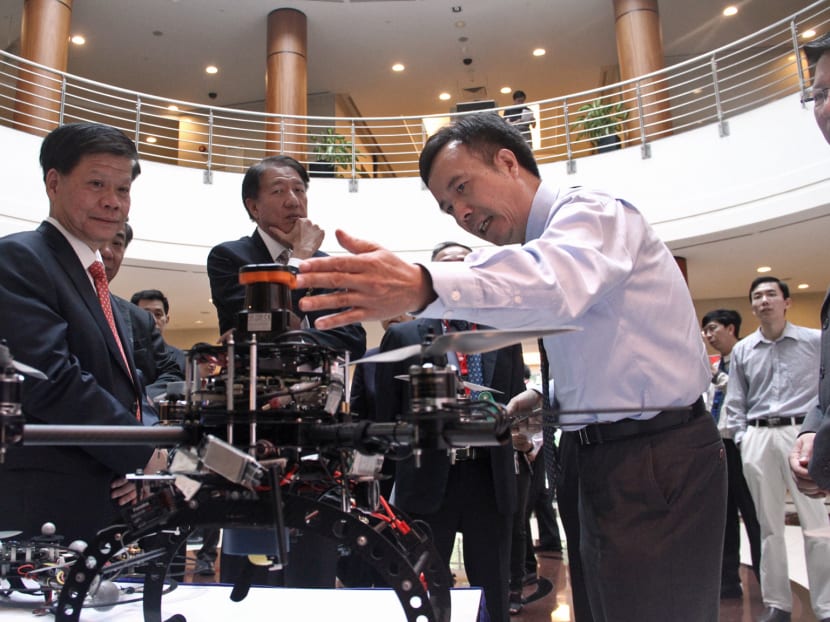Arriving soon: Robots to meet airport’s manpower needs
SINGAPORE — In three years, luggage deposited by passengers at Changi Airport will be carried by robotic arms across the airport, loaded onto driverless vehicles and sent to planes parked on the tarmac for loading.

Deputy Prime Minister Teo Chee Hean introduced to some of the robotic systems at the launch of ST Engineering and NTU's joint-research laboratory. Photo: Tristan Loh
SINGAPORE — In three years, luggage deposited by passengers at Changi Airport will be carried by robotic arms across the airport, loaded onto driverless vehicles and sent to planes parked on the tarmac for loading.
The robots will be able to direct the driverless vehicles to the right aircraft and command them to set off. To prevent crashes, the vehicles will also be able to communicate with one another along the way.
These technologies, which could go on trial by 2018 at Changi Airport to relieve labour shortages, will be developed in a new laboratory launched yesterday by Nanyang Technological University (NTU) and ST Engineering. The laboratory will receive S$53 million in funding from NTU, ST Engineering and the National Research Foundation (NRF) under its Corporate Laboratory@University Scheme.
At full strength, about 100 NTU researchers and staff will develop robotics for two main areas — airports as well as disaster rescue and relief.
Speaking at the launch of the laboratory yesterday, Deputy Prime Minister Teo Chee Hean said many countries, including Singapore, are facing the twin challenges of an ageing population and a shrinking workforce.
The automated luggage handling process will help ensure Changi Airport remains the leading transport hub in the region amid a tight labour market and expected passenger growth, he said.
“This is economically significant for Singapore and comes at a critical time because we plan for Terminal 4and Terminal 5. T5 will eventually have a capacity similar to that of our current Terminals 1 to 3 combined,” said Mr Teo, who is also chairman of the NRF.
Airports are facing challenges hiring luggage loaders and qualified staff to manage aircraft towing and the operation of aerobridges, the lab’s researchers said. Changi Airport, given its expansion plans, will experience an even bigger impact, they added.
Labour cost, which constitutes around 70 per cent of operation costs, is also set to rise. Mr Paul Tan, director of the new lab, said the automation of the luggage system will slash manpower needed at airports. “In total, when we implement this whole process, we are looking at being able to at least reduce manpower requirements by up to 50 per cent,” he said.
Apart from automating airport operations, the new lab aims to develop robotics teams that can assist in rescue and relief efforts in the aftermath of disasters. Instead of having multiple people control drones remotely, it wants to develop teams of drones that can divide the search workload themselves, after a human operator gives a general direction. The lab will develop algorithms to allow machines to automatically detect and classify objects, as well as adapt intelligently to changing environments, said NTU.
Mr Teo said in many major disasters worldwide, rescuers face extreme risks when carrying out operations. “Robotics and autonomous vehicles can help make search-and-rescue work safer and more effective.” XUE JIANYUE







